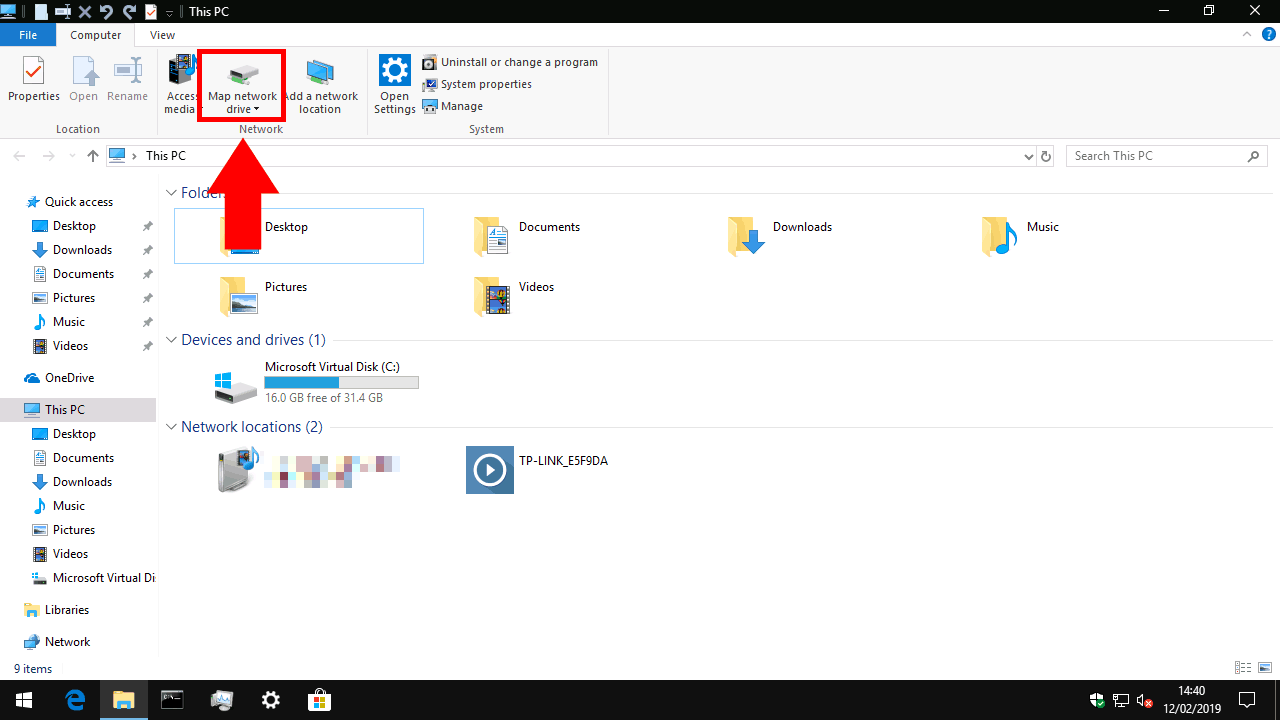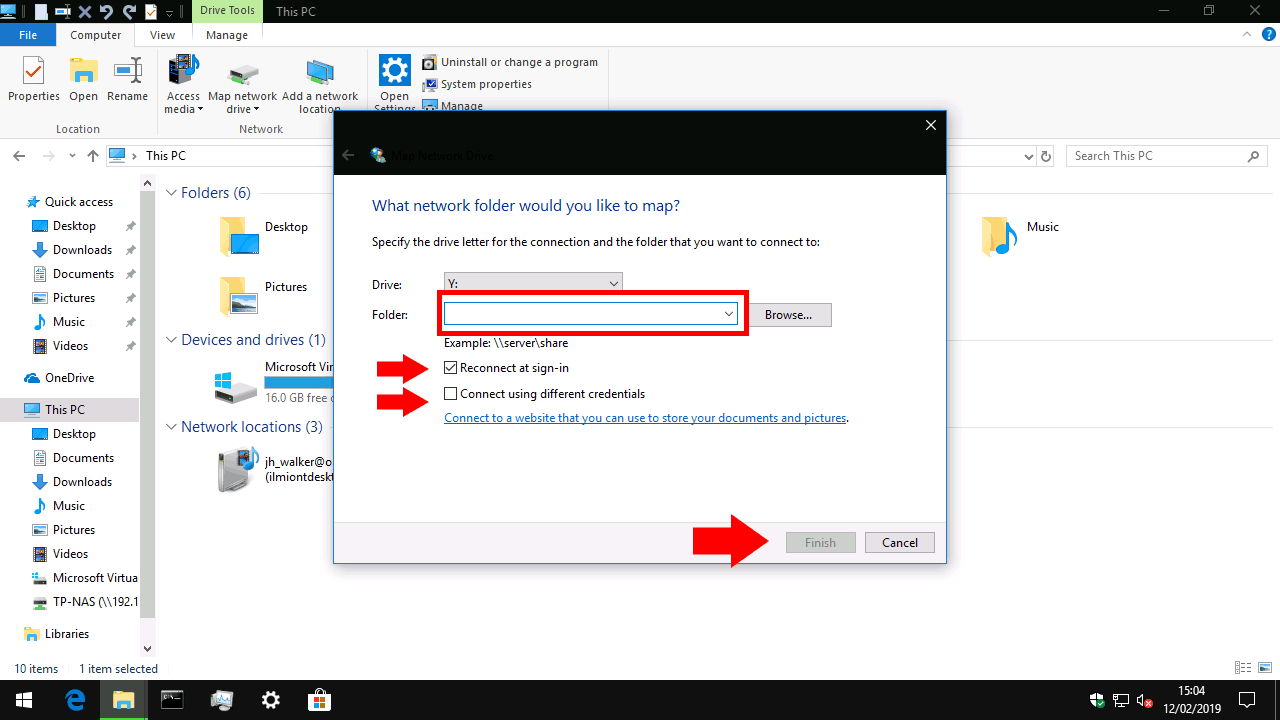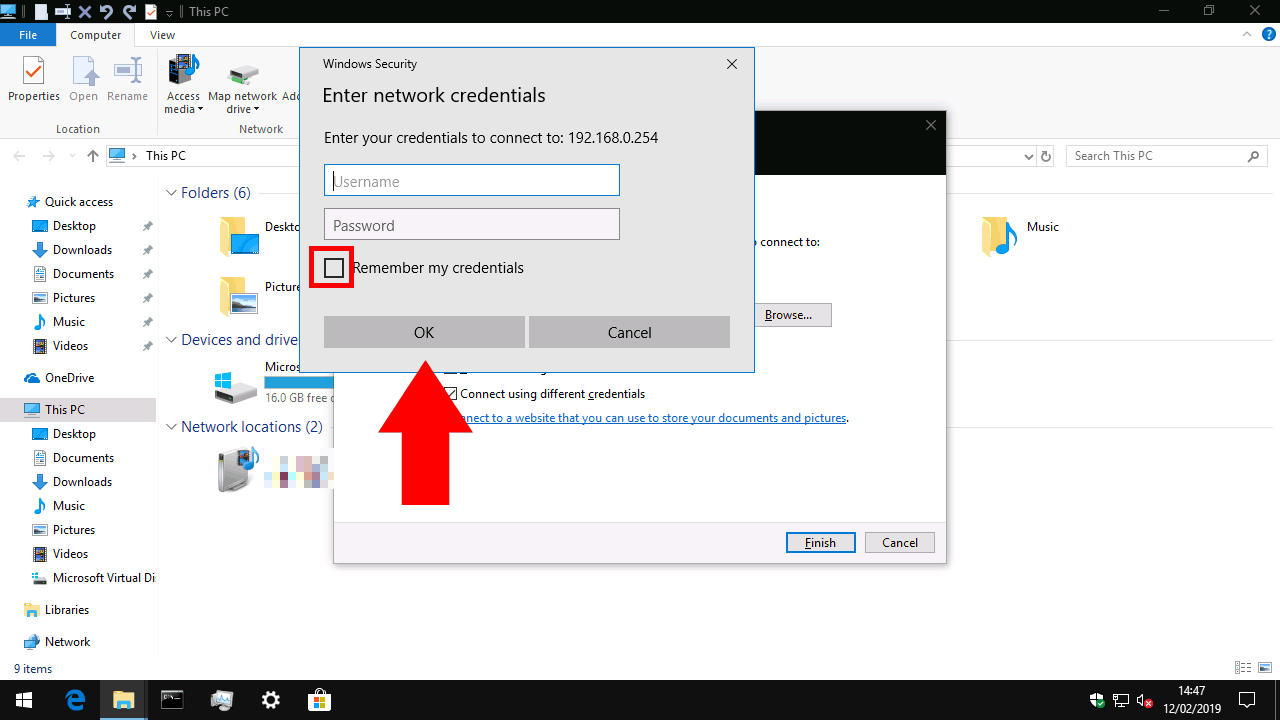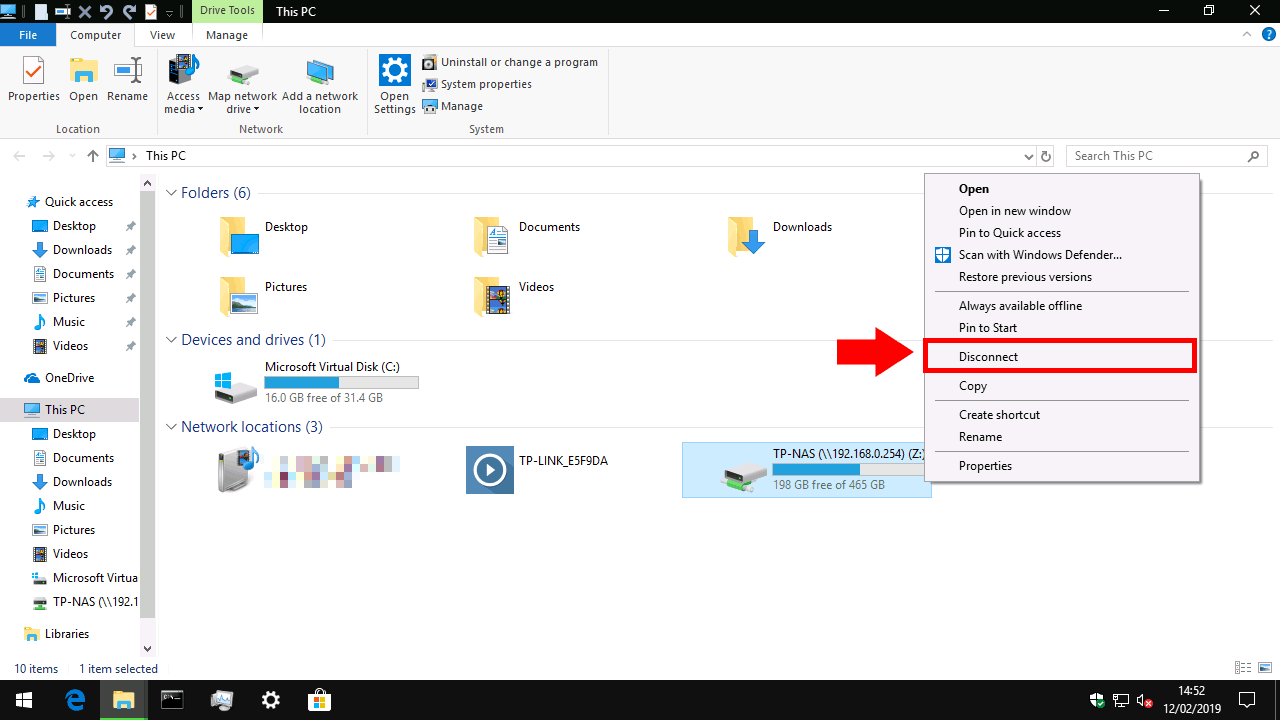How to connect to a network share in Windows 10
3 min. read
Published on
Read our disclosure page to find out how can you help Windows Report sustain the editorial team Read more
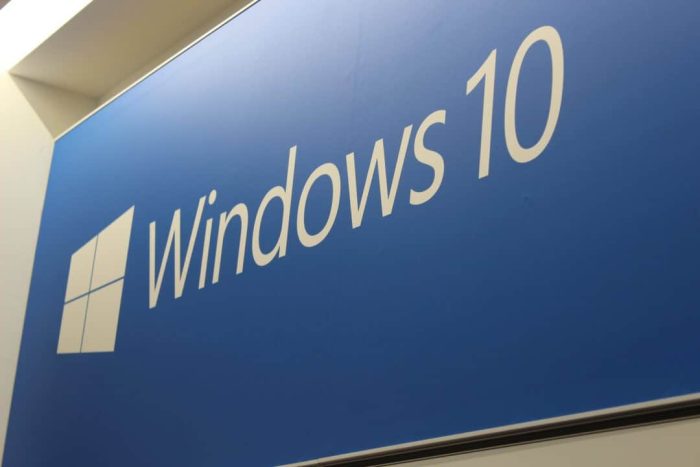
A network-connected hard drive, or NAS for Network Attached Storage, is a great way to add more storage to your PC, while making it available to other devices and users inside your home or office. Once you’ve got your new device connected to your network, you’ll need to add it to Windows 10 so you can access your files.
The first step is to open File Explorer – you can press Win+E to launch a new window from your desktop. Depending on your File Explorer settings, you’ll arrive at either the Quick Access or This PC screen. If you’re not already there, navigate to This PC by finding it in the left sidebar.
At the top of the window, in the ribbon control strip, click the “Map network drive” button in the “Network” section. The popup window which appears allows you to configure your drive connection.
First, fill in the “Folder” input. This may be slightly confusing, since it’s not asking for a real folder. You’ll need to know the network address of your hard drive, as well as the name of the folder “share” you’re connecting to. The former is usually the IP address of your network device. You’ll probably have configured the latter while setting up your network hard drive; you should refer to its documentation if you’re feeling stuck.
Input the share address in the same format as the example given. We’re connecting to a share called “TP-NAS” on the network device 192.168.0.254, so the correct path is “\192.168.0.254TP-NAS.”
Before moving on, choose a drive letter for the device from the dropdown menu. When you add the network share, it appears in Windows as similar to a regular hard drive or USB stick. The drive letter determines the identifying letter it will get within the system. You can use the drive letter to reference the drive in file paths from anywhere in Windows.
Finally, move your attention to the two checkboxes. You’ll probably want to leave “Reconnect at sign-in” selected; otherwise, you’ll need to manually reconnect to the share each time you start your PC.
“Connect using different credentials” is more interesting. If your network drive is password-protected, keeping this disabled will attempt to login automatically using your Windows username and password. If you have a different username or password configured on your network drive, you should check this box. You’ll be able to supply your username and password after you click “Finish.”
Click “Finish” to add your network share. If you’re connecting with the different credentials option enabled, you’ll be prompted to enter your username and password for the network drive. Tick the “Remember my credentials” box here to ensure you don’t need to login every time you access the drive.
That’s it! After a moment, you should see Windows open a new File Explorer window displaying the contents of the drive. If you return to This PC, you’ll see the drive show up under “Network locations.” You can now access files on the drive using either its share path (as you entered while connecting to the drive) or the drive letter you assigned it. To disconnect, just right-click the drive in File Explorer and choose “Disconnect.”

